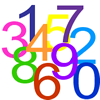Skip over navigation

Bracelets
Square Corners
First Connect Three


Or search by topic
Number and algebra
Geometry and measure
Probability and statistics
Working mathematically
Advanced mathematics
For younger learners
Counters

Counters
Counters are a great resource that we can use in mathematics in a number of ways, for example to show patterns, to model our thinking or to keep track of moves. We have put together a number of activities that all use counters - can you work out the different ways in which the counters are used? Can you find some ways which aren't mentioned? Are there examples where stones or pebbles or … would
be just as good? Are there examples where the roundness of the counter matters? Are there examples where lots of the same thing is important?
Bracelets Age 7 to 11Challenge Level 


Age 7 to 11
Challenge Level 





Investigate the different shaped bracelets you could make from 18 different spherical beads. How do they compare if you use 24 beads?
Square Corners Age 7 to 11Challenge Level 


Age 7 to 11
Challenge Level 





What is the greatest number of counters you can place on the grid below without four of them lying at the corners of a square?
First Connect Three Age 7 to 11Challenge Level 


Age 7 to 11
Challenge Level 





Add or subtract the two numbers on the spinners and try to complete a row of three. Are there some numbers that are good to aim for?
You may also like
Digging Into Geometry
Dig deeply into geometrical ideas by having a go at the tasks in this Primary student feature.
More Playing with Numbers Upper Primary
More resources to support understanding multiplication and division through playing with numbers

